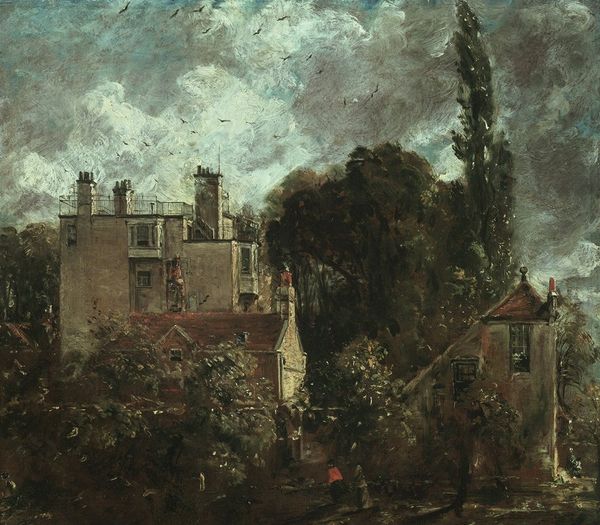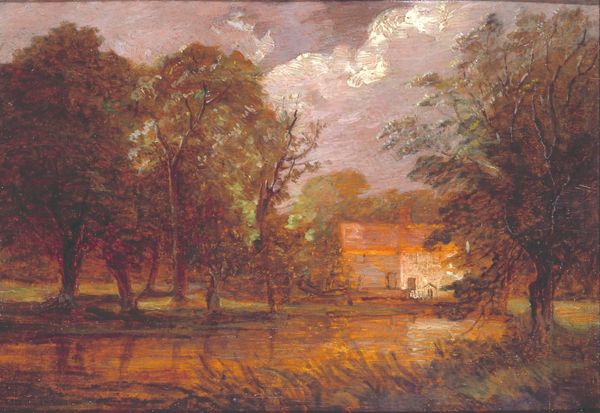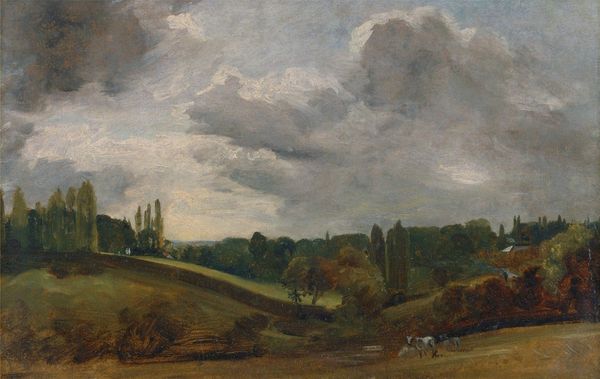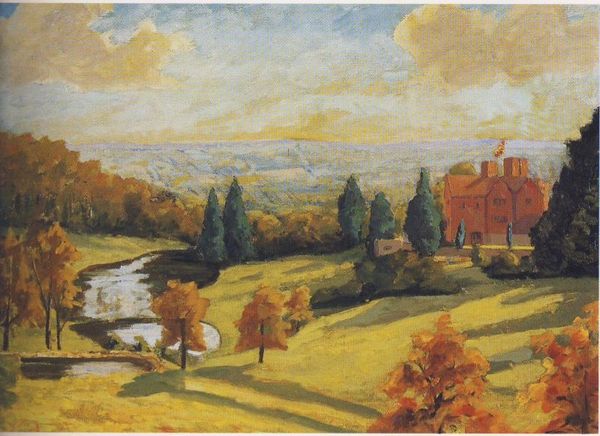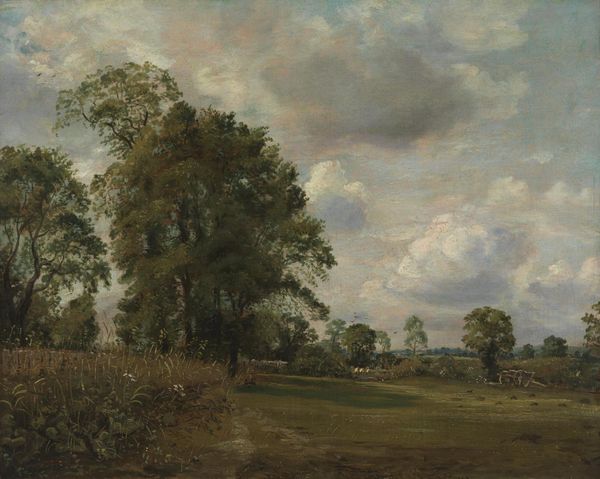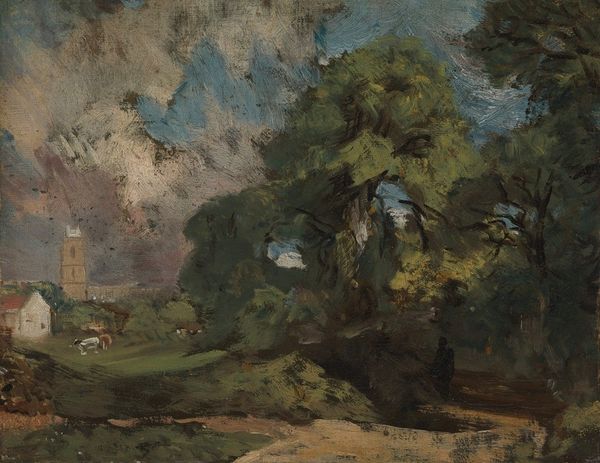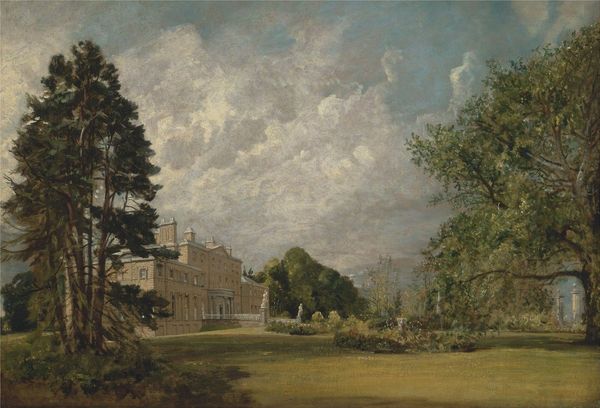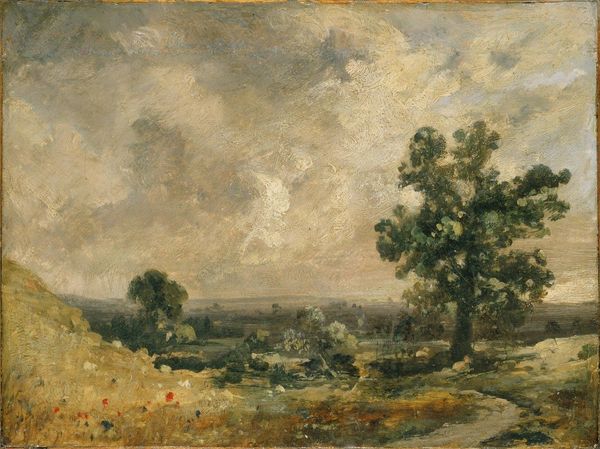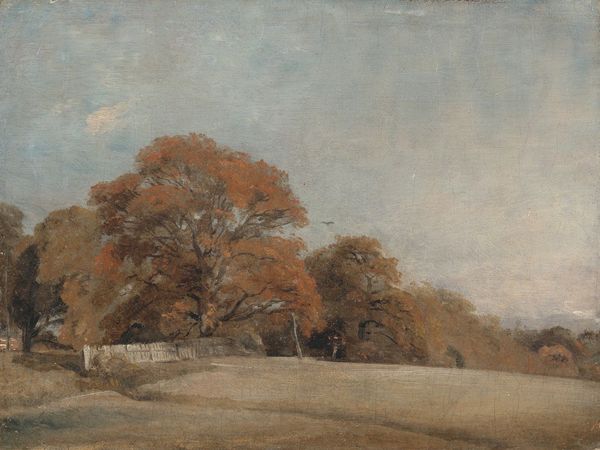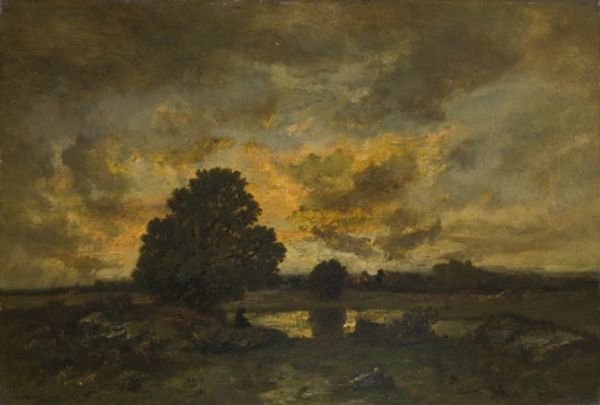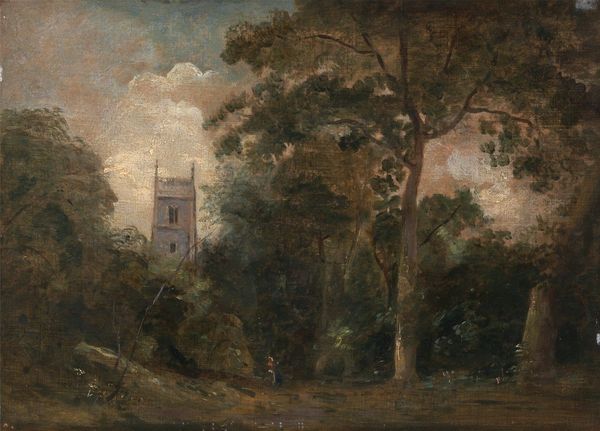
painting, plein-air, oil-paint
#
painting
#
plein-air
#
oil-paint
#
landscape
#
oil painting
#
romanticism
Copyright: Public Domain: Artvee
Curator: There’s an almost unsettling drama about this one. It feels raw, like a quickly captured impression of a storm passing over a familiar place. Editor: That immediacy comes from its being a plein-air painting by John Constable titled *East Bergholt Church*, created around 1809. It’s an oil sketch, offering us a window into his process, rather than a finished presentation piece. We see him wrestling with light and atmosphere, painting directly from nature. Curator: Absolutely, look how the church spire pushes up amidst the buildings, a strong symbolic visual anchor that pierces through the shifting cloudscape. There’s a fascinating dance between the stability of the church and the impermanence of weather—a classic Romantic preoccupation. The towering clouds are about the sublime power of nature versus the architecture that defines us. Editor: That relationship, the interplay between nature and society, was very much on Constable’s mind, but let's consider the specifics of the scene: East Bergholt was Constable's birthplace, it played a massive role in how the artist saw himself and his place in society, not merely about an idea. And the location wasn’t chosen at random—Constable’s family were prominent figures in the village, with his father owning a mill. It connects the church to the everyday life and material concerns of the village. The image is about history. Curator: The church becomes an axis point for his personal story too, not merely about religion. But yes, it represents communal memory, shared beliefs... a powerful symbol embedded within his lived reality. I appreciate how that raw quality reveals the vulnerability of shared social frameworks amidst the constant flux of time and landscape. Editor: His focus on place challenged prevailing academic conventions that favored idealized, classical landscapes, paving the way for the Realist movement. I see here also, how his intimate knowledge and affection for the Suffolk countryside are central to his revolutionary artistic contribution. He put his world on the canvas, to give dignity to rural life. Curator: Ultimately, the piece acts as a mirror reflecting both the external landscape and our own internal sense of place, change, and enduring belonging. Editor: Indeed, *East Bergholt Church* provides a complex dialogue on what it meant to create landscapes during a transformational epoch.
Comments
No comments
Be the first to comment and join the conversation on the ultimate creative platform.
